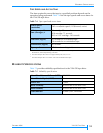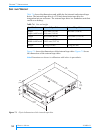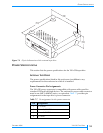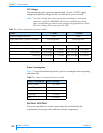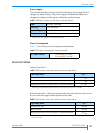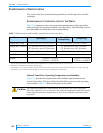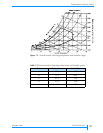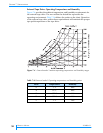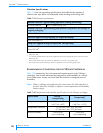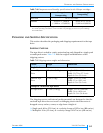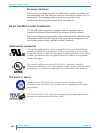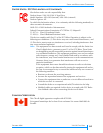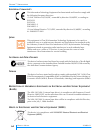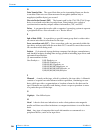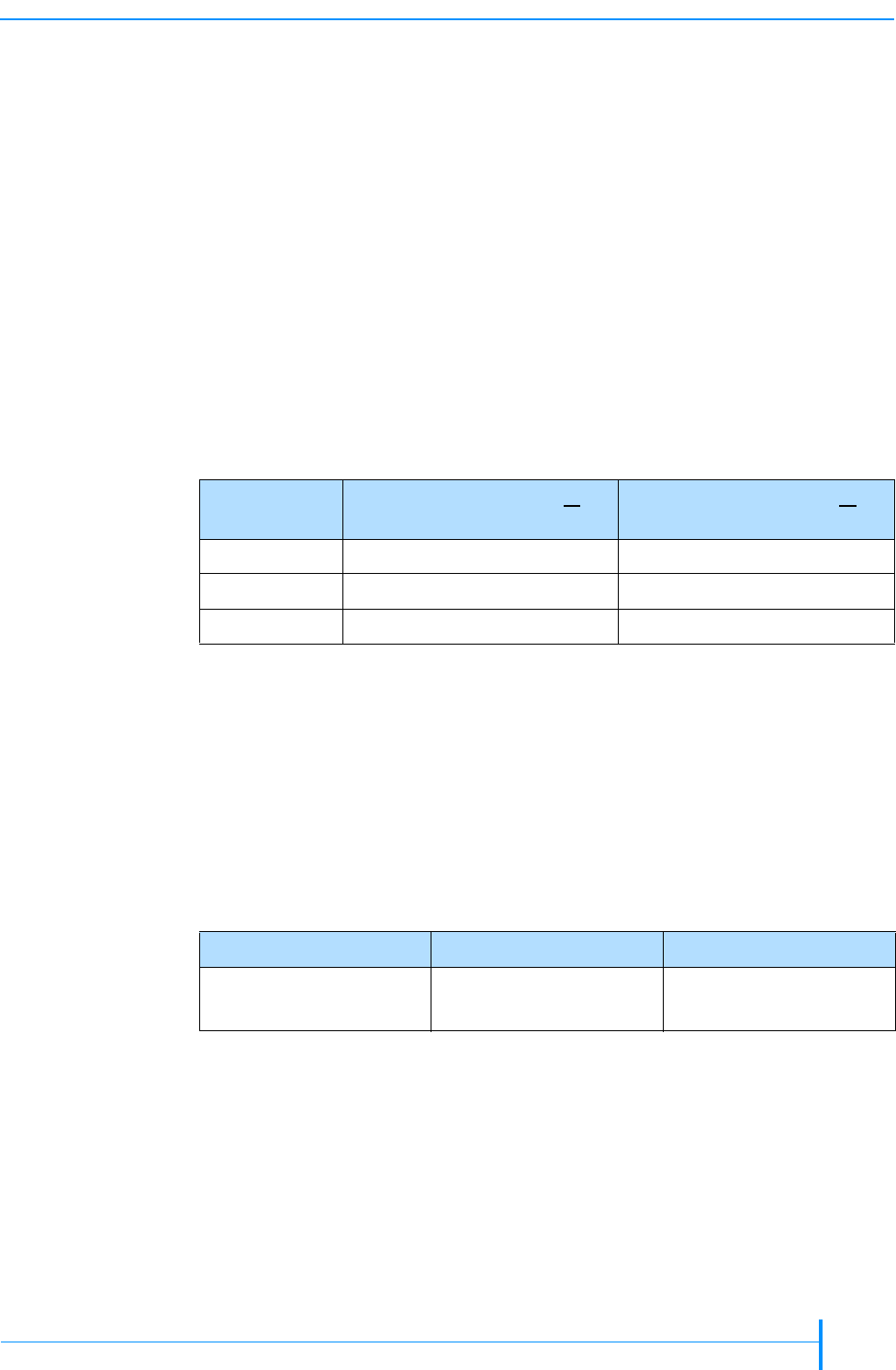
OCTOBER 2006 VXA-320 TAPE DRIVE
59
ENVIRONMENTAL SPECIFICATIONS
Air Flow/Cooling Requirements
When mounted in the host enclosure, the tape drive must have adequate air
flow. Ensure that ambient air is allowed to pass through the ventilation holes
shown in Figure 3-1 on page 19. These ventilation holes must not be blocked.
The air flow around the tape drive must be sufficient to prevent tape path
temperatures from exceeding 45 °C (113 °F).
The tape drive is equipped with a temperature sensor. It issues an
overtemperature signal through the LOG SENSE command if the above
temperature is exceeded. You can access temperature data through the LOG
SENSE command. See the VXA-320 (VXA-3) SCSI Reference Manual.
Particulate Contamination Limits
The VXA-320 tape drive is designed to operate in environments that do not
exceed the limits listed in Tabl e 7 -1 7 .
Shock Specifications
The storage and nonoperating shock levels indicate how much shock the tape
drive can withstand when it is not operating. The operating shock levels
indicate how much shock the tape drive can withstand while reading and
writing data. After withstanding this amount of shock, the tape drive operates
normally.
Tab le 7- 18 lists the shock specifications for the tape drive.
Table 7-17 Particulate contamination limits
Particle Size
(Microns)
Number of Particles >
Particle Size per Cubic Meter
Number of Particles >
Particle Size per Cubic Foot
0.1 8.8 x 10
7
2.5 x 10
6
0.5 3.5 x 10
7
1.0 x 10
6
5.0 2.5 x 10
7
7.0 x 10
6
Table 7-18 Shock specifications
Operating Nonoperating
a, b
a
The tape drive has been unpacked, but no power is applied.
b
Half-sine shock pulses are applied to each of the three orthogonal axes. (Three shocks at 60 g at a rate not
exceeding 1 shock per second. One shock at 50 g.)
Transportation
c
c
The tape drive is in its original shipping container.
5 g for 3 msec
d
6 g for 11msec
e
d
Half-sine, at a rate not exceeding 1 shock per second; 20 shocks applied to each of the three orthogonal
axes.
e
Half-sine, at a rate not exceeding 1 shock per every 3 seconds; 10 shocks applied to each of the three
orthogonal axes.
60 g for 3 msec
50 g for 11 msec
ISTA Procedure 2A



